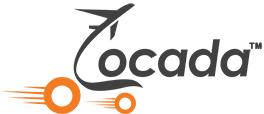
 ARC Advisory Group’s research on the warehouse technology markets (WMS, Warehouse Automation, and Mobile Warehouse Robotics) shows that 3PLs are prominent investors in technology. Other end-user based research we have conducted shows the pressures of e-commerce fulfillment demands, labor shortages, and tight margins are factors driving these investments. Furthermore, research from third-parties, such as CBRE show that 3PLs have been leading industrial real estate leasing activity recently – due in part to growth in e-commerce and the desire of companies to outsource fulfillment operations to 3PLs. It is beneficial to complement these sources of market information with detailed discussions with those directly involved with day-to-day operating environment. Doing so provides valuable “color” to the overall trends. I had the opportunity to speak with Alan Prillaman, SVP of Client Services at Open Sky Group, about the 3PL market. Open Sky Group is a global specialist in the Blue Yonder (formerly JDA RedPrairie) supply chain platform. Alan works with 3PLs in his current role, and also worked directly for a 3PL earlier in his career. I asked Alan a few questions to obtain his perspective on the 3PL warehousing environment. First, for some historical context, I asked how the challenges facing 3PLs have changed since his time working directly for a 3PL. And more recently, what commonalities do you see among the 3PLs clients you are working with at Open Sky Group? Below are some key points from our discussion. I hope you find his insights as informative as I did.
ARC Advisory Group’s research on the warehouse technology markets (WMS, Warehouse Automation, and Mobile Warehouse Robotics) shows that 3PLs are prominent investors in technology. Other end-user based research we have conducted shows the pressures of e-commerce fulfillment demands, labor shortages, and tight margins are factors driving these investments. Furthermore, research from third-parties, such as CBRE show that 3PLs have been leading industrial real estate leasing activity recently – due in part to growth in e-commerce and the desire of companies to outsource fulfillment operations to 3PLs. It is beneficial to complement these sources of market information with detailed discussions with those directly involved with day-to-day operating environment. Doing so provides valuable “color” to the overall trends. I had the opportunity to speak with Alan Prillaman, SVP of Client Services at Open Sky Group, about the 3PL market. Open Sky Group is a global specialist in the Blue Yonder (formerly JDA RedPrairie) supply chain platform. Alan works with 3PLs in his current role, and also worked directly for a 3PL earlier in his career. I asked Alan a few questions to obtain his perspective on the 3PL warehousing environment. First, for some historical context, I asked how the challenges facing 3PLs have changed since his time working directly for a 3PL. And more recently, what commonalities do you see among the 3PLs clients you are working with at Open Sky Group? Below are some key points from our discussion. I hope you find his insights as informative as I did.
How 3PL’s Operating Challenges Have Evolved
Alen stated that today’s common operating challenges existed years ago, but they are more prevalent today. The biggest changes have been in the progression of technology and consumer expectations. There have been a lot of disruptors in the industry recently. Certain retailers and certain customers continue to raise the bar in meeting delivery and fulfillment of orders – and this has become a competitive advantage for the fulfillment organizations that can make this happen. And some companies, such as Amazon, may be willing to lose money on fulfillment to gain market share. This can place additional cost pressures on other organizations. Also, labor shortages are more severe today than they were when he worked at a 3PL. In today’s environment it can be a real challenge to find good, reliable labor that will work at a 3PL for an extended period of time. This has elevated the importance of warehouse worker training.
Alan worked in pricing for a 3PL. And he confirmed that operating margins at 3PLs are very thin. Meanwhile, they have demanding customer expectations to meet. This puts them between their clients and their clients’ customer demands. Thin margins are often addressed with capital investments in business – lowering the variable costs of fulfillment. However, large capital investments typically require high volumes of throughput for an extended time frame to offset the large fixed costs. 3PL contracts are often in the 3 -5 year range. This time frame is often too short or too excessively risky to spend $10 million on a highly automated conveyance system. Digital automation, such as WMS, labor management, voice picking, etc, tends to be less risky than large physical automation. This is due to its lower fixed costs and broad applicability to various operations. Software solutions can address training issues (multi-language instructions, easy to understand business rules) and provide improved productivity and efficiency with relatively minimal costs in comparison to physical automation.
How Open Sky Group’s 3PL Clients are Addressing Today’s Operating Environment
Virtually all 3PLs face challenges relative to the thin operating margins in the industry. Open Sky looks first at helping its 3PL clients maximize the utilization of the assets (people, process, technology) they currently have in place. Open Sky will engage with a client that is often considering potential forms of automation. They will conduct a detailed assessment of a client’s operations and often determine that the client isn’t fully leveraging what is available within the WMS and labor systems. Quite often they are leaving a lot of opportunity on the table such as using task interleaving, minimizing overall travel time, or other lower cost alternatives to automation. His experience working in operations at a 3PL informs him that there can be a domino effect of taking on too much too fast that can minimize or delay reaching the desired efficiency and quality goals.
Open Sky has seen a number of its 3PL customers adopting lower cost forms of automation – such as autonomous mobile robots (AMRs). Many e-commerce retailers have a true peak season in the Novemenber or December time frame. OpenSky will see instances where labor forces will virtually double in size during that time. So if a 3PL is using AMRs or GTP systems to support these clients, they will have a need to scale that automation as well. Some autonomous robotics providers will actually lease their bots on a temporary basis to help clients during peak periods for a time frame such as 3 months, then take back the leased vehicles after that peak period. This helps 3PLs align costs more directly with throughput volumes and provides the flexiblity that many 3PLs require.
Flexibility is especially important for 3PLs operating in a multi-client warehouse environment. Open Sky has some 3PL customers that have 20 of their clients in a single large facility. And those clients tend to turn over fairly often. There is a good deal of variability in the fulfillment requirements for each client (for example, various value-added services, etc).So if a 3PL has a high-cost, inflexible system that doesn’t meet the needs of a new client, this can cause problems with a highly variable business of a 3PL. Systems that are beneficial to these 3PLs are typically those that are applicable to a wide range of client needs. Some examples include WMS, voice directed picking, pick/put-to-light, and other options help with reducing overall training time, drive quality of fullfillment up, and drive the need for headcount increases down.
Final Word
The biggest change since Alan worked at a 3PL is the number of technology options available. There are so many options available both on the digital automation with the improvement in WMS systems and voice systems, the user interfaces and IOS and Android platforms; and in the forms of physical automation, such as AMRs that do not require the level of infrastructure that was required for legacy AGVs. With all of these options out there, it can be a challenge to find out what is out there, what applicable to their application, and what is tried and proven. Going to trade shows can be beneficial to 3PLs to see what is out there. Finally Alan suggests, “Be sure not to follow too many shiny objects. Take an inventory of what you have at your disposal today. Make sure you maximize what you have . Whatever solution you are looking at, make sure it is tried and proven in the market, and that it is scalable.”
The post What Can A 3PL Invest in Today to Remain Competitive for Tomorrow? appeared first on Logistics Viewpoints.
